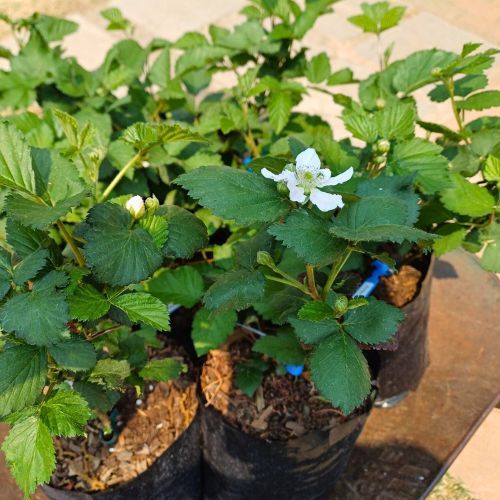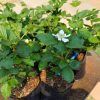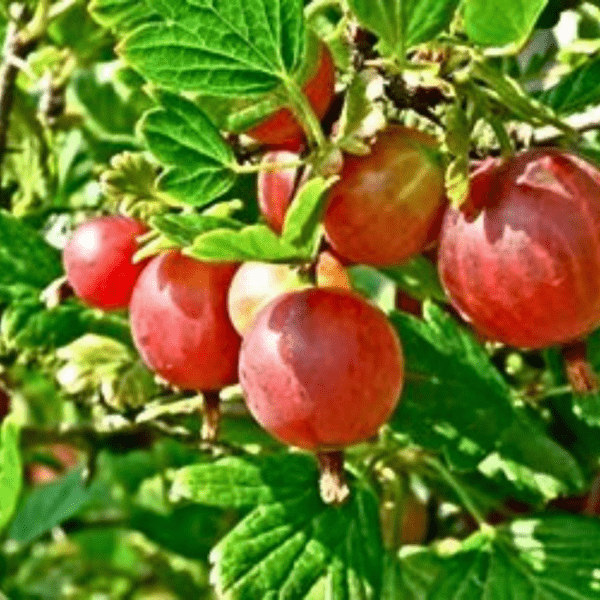Position
Arapaho Thornless Blackberry bush enjoys full sun and part shade. For best results, plant it in a sheltered, sunny position. Although they can tolerate some afternoon shade, the yield would be better in full sun.
Size
These bushes can grow to 1about 1-2 metres, with a 1m width. Plant these bushes about 1m apart for best results, as they are upright and do not require any support.
Soil Type
This berry plant enjoys organic rich, slightly acidic, moist, well-drained soil. The blackberry kit consists of:
1 Arapaho Blackberry Bush
1 Pine bark Mulch
Dig a 50cm x 50cm deep hole and add a bag of compost or acid compost. Mix the berry mix and volcanic rock dust into the top section of this soil. Make a little hole and plant, ensuring you don’t add the soil higher than where the soil is in the bag. Then, add the pine bark mulch on top, keeping it away from the plant’s stem. Place the plant directly into the soil mixture and cover it with pine bark mulch.
We stock volcanic rock dust, which contains organic minerals and trace elements to boost soil health and increase important micro-organisms essential for healthy soil.
Watering
Blackberries dislike waterlogged soil. Keep the top inch of soil moist for the first 2-3 weeks. Give it a good soaking every 2 – 3 days if there’s been no rain during summer. During the winter, water lightly twice a week.
Mulching
To maintain the soil acidity, apply good organic mulch, like pine bark, around the plant every few months. Keep the mulch away from the stem of the plant.
Fertilising
Apply 1 teaspoon of our slow-release nitrogen-rich berry fertiliser every 4-5 months.
Pruning
- Prune erect blackberries twice yearly.
- During summer, pinch out the tips of new canes when they reach about 90cm to promote side branch growth.
- Prune again in late winter by removing at ground level all the canes that have fruited the previous season.
- Remove any young canes that are crowded, spindly, or diseased, and shorten the fruiting laterals to 30-45cm.
Harvesting
When the fruit turns black, you can begin harvesting. The ripest berries are a deep, shiny black and should be picked for eating fresh.








